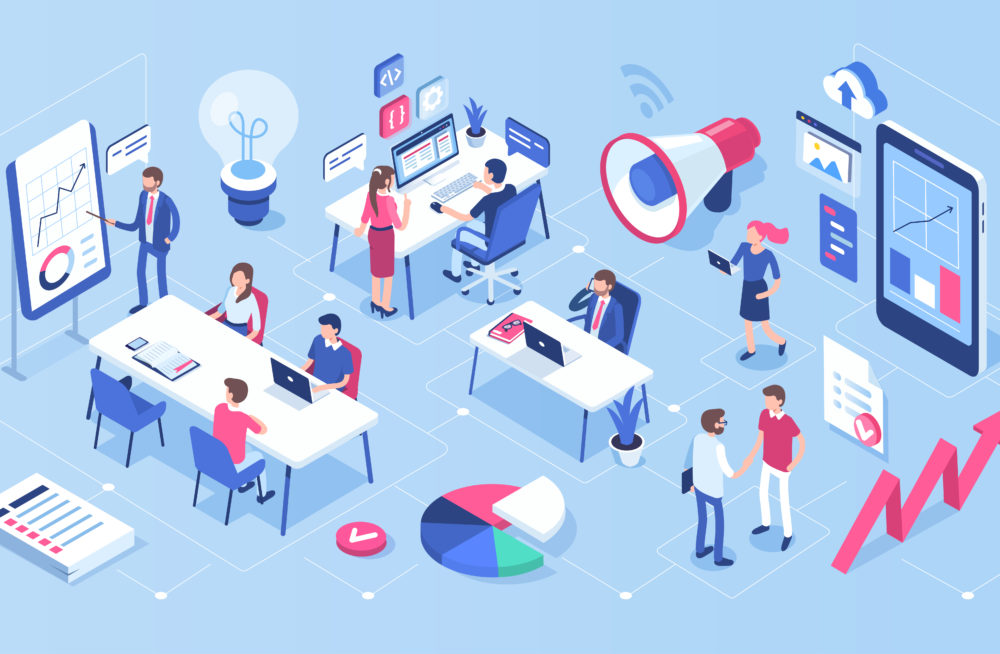The Many Benefits of having an LMS be part of your employee’s onboarding experience
It’s time to admit it: integrating a new employee into your organization can feel intimidating.
And it is no wonder. You need to prepare your new hires fast, provide skills training, make processes and procedural knowledge accessible, and teach software how-to–all while setting role and behavior expectations, and introducing your company’s philosophy, values, and culture.
But all of these onboarding goals can be supported and achieved by using a Learning Management System (LMS.) In this expanding Information Age, a great onboarding process cannot be solely focused on helping your employees adjust to their new work environment, but it must be a results-oriented and tech-supported process, focused on the employee’s lifetime relationship to their productivity, job satisfaction, career growth, and overall retention. This is where an LMS can come in handy.
Here are some short and long-term benefits of leveraging an LMS to tackle your onboarding needs and incorporate new members to your team successfully.
- Cut down onboarding time
The most immediate benefit of using an LMS to support employee onboarding is that it makes the whole process faster. Onboarding time can be cut down enormously by digitizing information that you may otherwise explain in person to the new hires during their first week. You can save time by providing hires early access to new-hire resources such as:
- Welcoming video and culture overview
- Summary of onboarding timeline and expectations
- Instructions on how to set up payroll or tax paperwork
- Guide to setup software accounts and other tools
- Breakdown of benefits and pay
- Digital handbook of company policies and procedures
- Interactive map of the company’s organizational chart
By making these resources available to hires before their first day, you can make your orientation sessions shorter, use the extra time to focus on your employee’s socialization with their new team, including getting a cup of coffee with your new hire!
- Ease onboarding angst
Upon hiring, many new employees feel the urge to acquire as much knowledge as they can in a very short period of time. This process can be overwhelming and produce early burnout. It can also be confusing, especially if they are exposed to conflicting or outdated information.
You can help your new team member to easily navigate all types of company knowledge by having standardized and up-to-date content in your LMS. This is particularly useful when hiring multiple team members at once, as they will all become equally acquainted with the information they will need in order to work together.
Making your LMS accessible after onboarding can also help alleviate some of the stress new employees may feel when integrating to a new company during the first few months. Your LMS can be a reference guide they can use every time they have a question or when they become stuck at one of their tasks. Make sure they know your LMS is just another tool in their repertoire.
- Set the right expectations, early
Onboarding isn’t only about paperwork and training, but it is also a key period of adaptation to your organization’s culture, values, and objectives. Setting the right expectations about how a team functions, thinks, and acts can impact the way your employee adapts to their new position and performs their job.
An LMS can help you set the right expectations early. Before going into training tutorials or how-to videos applicable to your new employee’s role, many companies provide a window into how they work by creating LMS content that highlights the type of culture they have, the principles and values that guide their company’s philosophy, and most importantly, the organization’s goals and objectives, and how these have been achieved or not in the past.
This information helps set the new hires into the right mind frame of what’s expected from them–not just as individuals but also as part of a team, whether local or global. Setting the right expectations from the start can help avoid early turnover, performance issues, or even goal misalignment.
- Onboard remote employees
With more companies adopting remote teams, an increasing percentage of employees working remotely, and studies demonstrating how remote work can increase worker productivity, many argue that remote work is the future of work.
This is why when it comes to onboarding remote workers, cloud technologies are your best support tools, and why implementing an LMS is probably one of the best decisions you can make to anticipate upcoming work trends.
Your remote employees can use an LMS to access training content at any time from anywhere, without having to rely on someone to pass along their knowledge in person or via unnecessary video conferencing. Learning management systems that implement mobile application technologies can be particularly powerful to train your remote staff, especially in geographical areas with poor or limited access to solid internet broadband.
An LMS can also create a collaborative learning and knowledge-sharing environment where every update or new process is shared and announced to all employees – using a single process and platform. Imagine how beneficial this can be for new employees working across multiple regions and time zones.
- Reduce onboarding costs
Among all the resources companies use to onboard and train personnel, we first mentioned time, but the reality is that money may be the most important of all.
It’s often the rule to have a dedicated HR team member or fellow coworker take time out of their day to onboard and train a new hire. If the new employee arrives at a company without previous training, this can translate to many hours a week spent teaching. Time spent away from work tasks can cost your company a lot of money, and impact overall productivity.
By using an LMS, you give time back to your trainers, as new hires can learn at their own pace, without having someone spend time with them. This in return, will mean that less money is spent on training and onboarding. Moreover, making your training live in a digital platform will save you money on other expenses such as rooms, paper products, and even travel.
- Track onboarding and training goals
For large organizations, hiring and onboarding dozens of employees at once can be logistically difficult. Add to this a new trend of incorporating longer onboarding and training programs, and the problem turns even more challenging.
A good way to keep track of all of your employees learning progress is to leverage the power of your LMS. Most systems come with advanced data tracking features that inform not only training completion rates but also proficiency levels of individuals and entire teams. The faster your new hires become proficient at the specifics of their roles, the sooner they will impact your company’s productivity.
Tracking onboarding and training progress of all of your employees can have an enormous impact on your operations, and even help you establish better learning and development goals. If your new hire is struggling at some point, you can help them exactly with what they need, helping them achieve their training goals and making their onboarding a success.
- Scale up your onboarding processes
Even if you don’t have a large workforce, small and medium sized companies must be prepared for growth. CEOs and People Managers alike need to anticipate upcoming hiring needs by putting in place a solid HR infrastructure, one capable of adapting and scaling onboarding and training processes accordingly.
Using an LMS from the early stages of a company can support your onboarding operations in the future. For example, if your team is small, let them focus on what they do best. Use their time wisely and let an LMS take care of your new hires training needs. Also, setting up an LMS often forces you to think about career pathways and progression, which can help you anticipate other future hiring and onboarding needs.
- Clarify your learning culture intentions
Having an LMS be part of your employee’s onboarding experience also hints to the type of learning culture you want to foster in your organization.
A well established LMS, full of rich training content, can speed up the onboarding and adaptation process of your new hires, but it can also express and indicate the company’s interest in their development and professional advancement–especially if your LMS is part of a well-defined career plan.
According to a 2018 workforce learning report by LinkedIn, 94% of employees would stay at a company longer if it invested in their career. A good way of demonstrating that this is a core value in your company is by making your LMS a component of their training as soon as they become hired.
An LMS equipped with learning paths, management courses, access to other departmental knowledge, and certificates or badging systems that reward learning and career milestones can lead to higher employee retention and avoid turnover.
Companies need to be aware of the increasing competitiveness for talent, and although new perks and flexible policies do attract new employees, learning and growth continues to be an important workforce magnet. An LMS can be one of the most supporting tools to achieve that.




